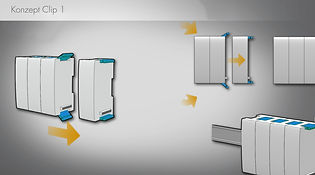Product- and Innovation Design
Process
Products today rarely function just through their aesthetics. The foundation of a successful product development is a holistic process that illuminates all relevant areas, starting with the consumers. Beginning with research and analysis, an individual design and process strategy is developed in close collaboration with the client. This strategy quickly results in a preview of all further phases and ensures a simple progression of the project without any unwanted surprises. The phases are adapted to the schedule and content needs of every project.
Research
Targeted market analysis is the foundation of all successful product development. It provides information about the positioning of the company's own products in relation to the competition, gives important insights for the design phase and prevents the possible breaches of intellectual property rights.
-
Market Analysis
-
Potencial Analysis
-
User Analysis

Concept
Based on the results of the research and the customer input product concepts are defined in this stage. The Concepts are created on basis of formal Design, technical Features, distribution concepts or/and Innovation Ideas.
-
Functional concepts
-
Design concepts
-
Production-and assembly concepts

Construction/Engineering
In the construction phase, all assemblies and individual components are modelled in 3D-CAD, based on the concept insights. Technical features can be simulated and verified to ensure a problem-free realization. Physical verification of the components usually happens by means of a functional prototype.
-
3-D CAD detailling
-
Simulation of functional concepts
-
Functional Prototypes

Design
Several design concepts are developed and discussed with the client in this phase, based on the insights of the market analysis and the construction models. In addition to the generation of photorealistic product images, the manufacture of a production-quality design prototype is often a part of this phase.
-
Design Strategy
-
Design Concepts
-
Photorealistic Renderings
-
Design Prototypes

Realisation
The last phase is the realization of the product. This includes finding and coordinating with suitable partners and suppliers. In the best-case scenario this is included in the earlier construction phase to ensure a problem-free project progression.
-
Coordination and choosing of business partners (e.g.:Tool Construction)
-
Briefings und technical drawings
-
Optimizing CAD Data
-
Controling of the production process
